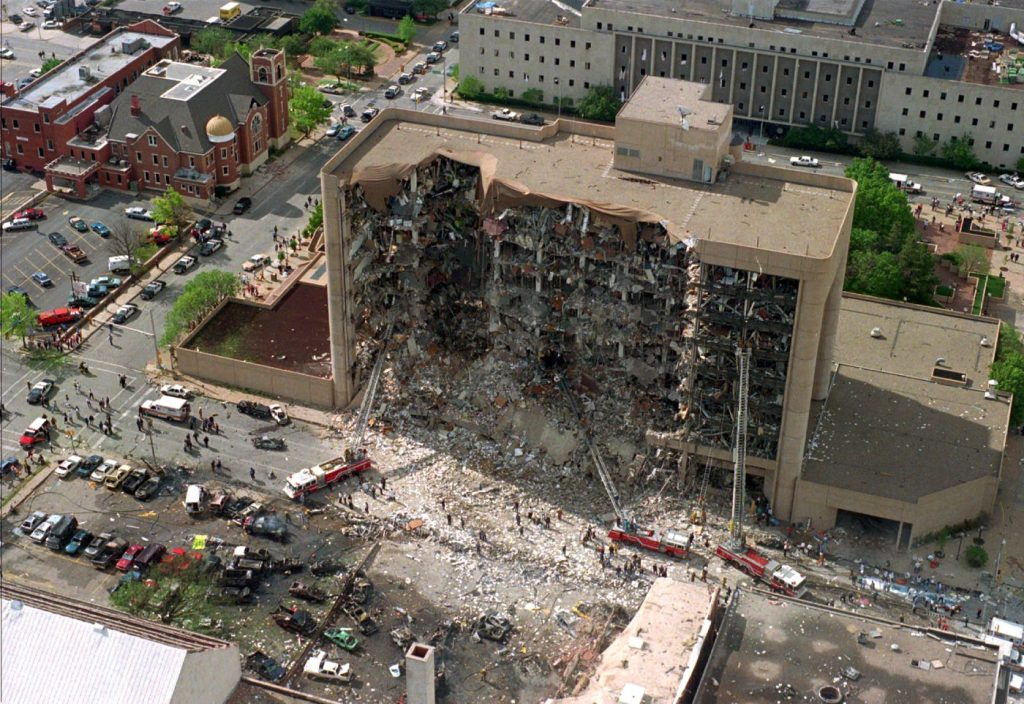On April 19, 1995, a devastating act of domestic terrorism shook the United States when a former U.S. Army soldier detonated a powerful bomb made from fertilizer and fuel oil outside the Alfred P. Murrah Federal Building in Oklahoma City. This horrific explosion occurred at 9:02 a.m. local time, resulting in the tragic loss of 168 lives, including 19 children, and over 500 individuals suffered injuries. This incident is recognized as the deadliest homegrown attack on American soil to date.
The events unfolded quickly as staffers at The Associated Press's Oklahoma City bureau felt the tremor of the blast, initially assuming it was a nearby gas explosion. Linda Franklin, then the AP's news editor, immediately dispatched reporters and photographers to the scene, which was approximately six miles away. Judy Gibbs Robinson, a broadcast editor, was the first AP reporter to reach the devastated area.
Upon arrival, Gibbs Robinson encountered a chaotic scene where people directed others to the disaster site, and she instinctively began documenting her surroundings, recalling the feelings and sights that would forever remain etched in her mind. She described the heartbreaking moments of parents reuniting with their children at a nearby YMCA daycare and the terrifying sight of a man who appeared unharmed from the front but was grievously injured from the blast at his back.
Communication was challenging, as cellphones were not yet widespread. Gibbs Robinson managed to file her first report using a landline phone set up by bank employees for public use. Back at the AP newsroom, Franklin and her team worked tirelessly to disseminate information, images, and updates to media outlets globally. Lindel Hutson, the bureau chief, described the overwhelming nature of the day, commenting on the feeling of being stretched thin due to the magnitude of the crisis.
Among those who contributed significantly to the coverage was amateur photographer Charles Porter, who approached the AP to share his images from the blast site. One photo in particular stood out—a poignant image of a firefighter holding a fatally injured baby. This image later earned Porter the Pulitzer Prize for spot news photography and remains one of the most iconic representations of the tragedy.
As the day progressed, the Oklahoma City AP bureau transformed into a hub of intense activity, with reporters, photographers, and editors from across the nation converging to cover the story. This tragic bombing had an indelible impact on everyone involved, as it occurred in their community and took a significant mental toll on the staff.
Initially, the news report issued by the Associated Press described the car bombing as resulting in over 20 fatalities, with rescues ongoing and many individuals still missing. There was no immediate claim of responsibility for the attack, which had left 300 individuals unaccounted for by the afternoon. Emergency responders were actively engaged in rescue efforts but faced challenges as debris and devastation plagued the area.
The Oklahoma City bombing, which left a crater approximately 8 feet deep, was viewed as a highly sophisticated act of violence. The destruction mirrored previous terrorist incidents yet marked a new chapter in domestic terrorism in the United States. In the aftermath, the nation grappled with heightened fears of terrorism, leading to increased security measures at federal buildings across the country.
In conclusion, this catastrophic event not only claimed numerous lives but also altered the sense of safety and security in America, emphasizing the need for vigilance against such senseless acts of violence.










